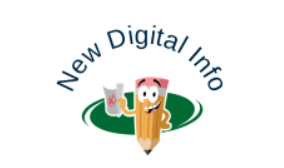In today’s education landscape, developing students’ critical thinking and communication skills is just as important as teaching scientific facts. That’s where the Claim + Evidence + Reasoning (CER) framework comes in. This structured approach to science inquiry helps students craft meaningful scientific explanations and engage in authentic argumentatin.This blog will explore how designing science inquiry using the CER model leads to deeper learning and clearer communication of scientific ideas.
What is the CER Framework in Science Inquiry?
The CER framework stands for:
Claim: A statement or conclusion that answers the original question.
Evidence: Scientific data that supports the claim.
Reasoning: A justification that connects the evidence to the claim using scientific principles.
When combined, Claim + Evidence + Reasoning = Explanation. This model mimics how real scientists think and argue, making it a powerful tool for classrooms from elementary to high school.
Why Use the CER Model in Science?
1. Encourages Critical Thinking
Instead of memorizing facts, students evaluate data, justify claims, and analyze outcomes.
2. Builds Scientific Literacy
The CER model reinforces the scientific method and teaches students how to make informed, evidence-based decisions.
3. Improves Writing and Communication
By structuring their thoughts clearly, students learn how to write scientifically and explain complex concepts simply.
How to Design Science Inquiry Using CER
Step 1: Pose a Scientific Question
- Start with an open-ended, testable question like:
- “How does light intensity affect plant growth?”
Step 2: Conduct Investigation and Gather Evidence
Let students experiment, collect data, and observe outcomes.
Step 3: Formulate a Claim
Example:
“Increased light intensity causes plants to grow taller.”
Step 4: Provide Evidence
Students include their observations and data points:
“Plants under 100W light grew an average of 10cm taller than those under 40W.”
Step 5: Add Reasoning
Connect evidence to scientific concepts:
“Light is essential for photosynthesis. Higher light intensity increases energy for growth, resulting in taller plants.”
Final Explanation:
“Increased light intensity causes plants to grow taller. This is supported by the data showing a 10cm height difference. Since photosynthesis requires light, more light enables plants to produce more food and energy, promoting growth.”
Tips for Implementing CER in the Classroom
Model It First: Show examples of strong and weak CERs.
Use Graphic Organizers: Help students separate the three components clearly.
Give Feedback: Focus on improving the reasoning section, which is often the most challenging.
Encourage Peer Review: Let students critique and improve each other’s explanations.
Real-World Applications:The CER model isn’t just for school—it mirrors how scientists, engineers, and researchers communicate their findings. It also helps students prepare for standardized tests, lab reports, and even future careers where analytical thinking is key.
Conclusion
Designing science inquiry around Claim + Evidence + Reasoning = Explanation transforms the classroom into a lab of logical thinking and scientific communication. By helping students think like scientists, CER fosters curiosity, clarity, and confidence in every learner.
FAQs About Designing Science Inquiry Using CER:
Q1: What age group is the CER model suitable for?
The CER framework can be adapted for all grade levels, from elementary science to high school and even introductory college-level courses.
Q2: Is CER only useful in science?
No! While it’s rooted in science, CER can also be applied in subjects like history, literature, and math where arguments and reasoning are necessary.
Q3: What’s the biggest challenge teachers face with CER?
Students often struggle with the reasoning part. It’s important to teach them how to connect evidence to scientific concepts clearly.
Q4: Can CER be used for group projects?
Absolutely. CER encourages collaboration and debate, making it ideal for group inquiry and shared investigations.
Q5: How can technology help in CER-based learning?
Digital tools like Google Docs, Padlet, or science apps can help students document their evidence, revise their reasoning, and share explanations easily.










